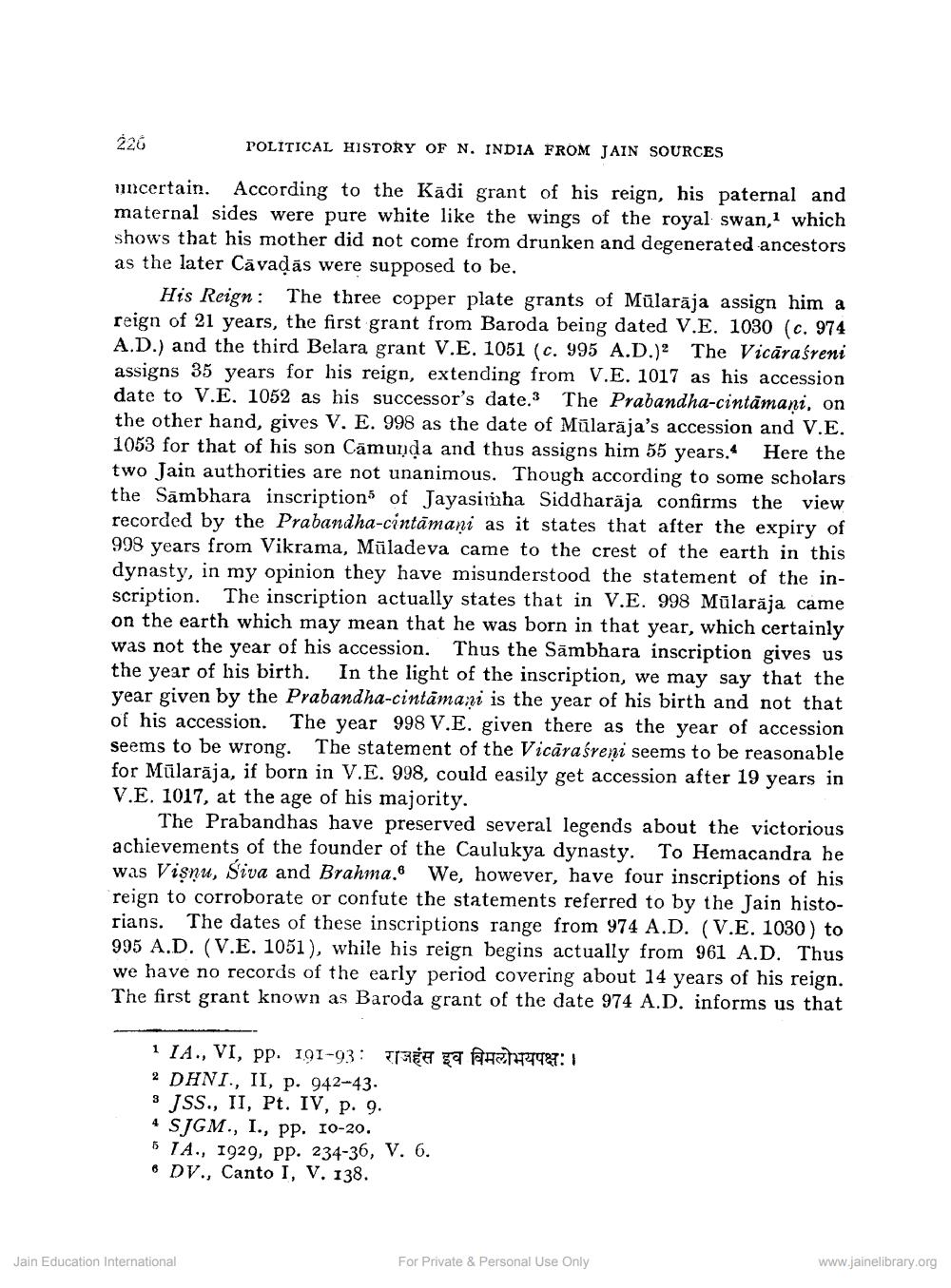________________
226
POLITICAL HISTORY OF N. INDIA FROM JAIN SOURCES
uncertain. According to the Kādi grant of his reign, his paternal and maternal sides were pure white like the wings of the royal swan, which shows that his mother did not come from drunken and degenerated ancestors as the later Cāvadās were supposed to be.
His Reign: The three copper plate grants of Mūlarāja assign him a reign of 21 years, the first grant from Baroda being dated V.E. 1030 (c. 974 A.D.) and the third Belara grant V.E. 1051 (c. 995 A.D.)2 The Vicāraśreni assigns 35 years for his reign, extending from V.E. 1017 as his accession date to V.E. 1052 as his successor's date.3 The Prabandha-cintamani, on the other hand, gives V. E. 998 as the date of Mūlarāja's accession and V.E. 1053 for that of his son Cāmunda and thus assigns him 55 years. Here the two Jain authorities are not unanimous. Though according to some scholars the Sambhara inscriptions of Jayasinha Siddharaja confirms the view recorded by the Prabandha-cintamani as it states that after the expiry of 998 years from Vikrama, Mūladeva came to the crest of the earth in this dynasty, in my opinion they have misunderstood the statement of the inscription. The inscription actually states that in V.E. 998 Mūlarăja came on the earth which may mean that he was born in that year, which certainly was not the year of his accession. Thus the Sāmbhara inscription gives us the year of his birth. In the light of the inscription, we may say that the year given by the Prabandha-cintāmazi is the year of his birth and not that of his accession. The year 998 V.E. given there as the year of accession seems to be wrong. The statement of the Vicāraśreni seems to be reasonable for Mūlarāja, if born in V.E. 998, could easily get accession after 19 years in V.E. 1017, at the age of his majority.
The Prabandhas have preserved several legends about the victorious achievements of the founder of the Caulukya dynasty. To Hemacandra he was Visnu, Siva and Brahma. We, however, have four inscriptions of his reign to corroborate or confute the statements referred to by the Jain historians. The dates of these inscriptions range from 974 A.D. (V.E. 1030) to 995 A.D. (V.E. 1051), while his reign begins actually from 961 A.D. Thus we have no records of the early period covering about 14 years of his reign. The first grant known as Baroda grant of the date 974 A.D. informs us that
1 1 A., VI, pp. 191-93: T&T TO PAZN927: 1 2 DHNI., II, p. 942-43. 3 JSS., II, Pt. IV, p. 9. 4 SJGM., I., pp. 10-20. 6 TA., 1929, pp. 234-36, V. 6. & DV., Canto I, V. 138.
For Private & Personal Use Only
www.jainelibrary.org
Jain Education International




